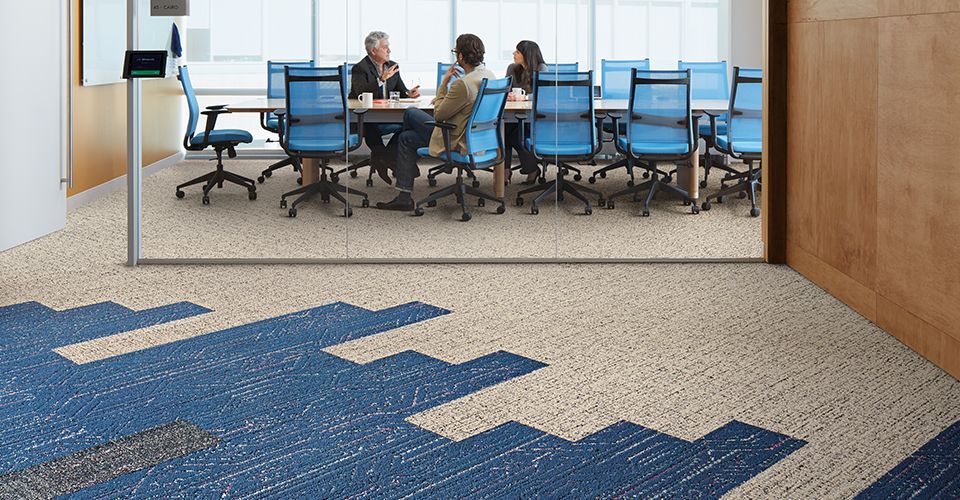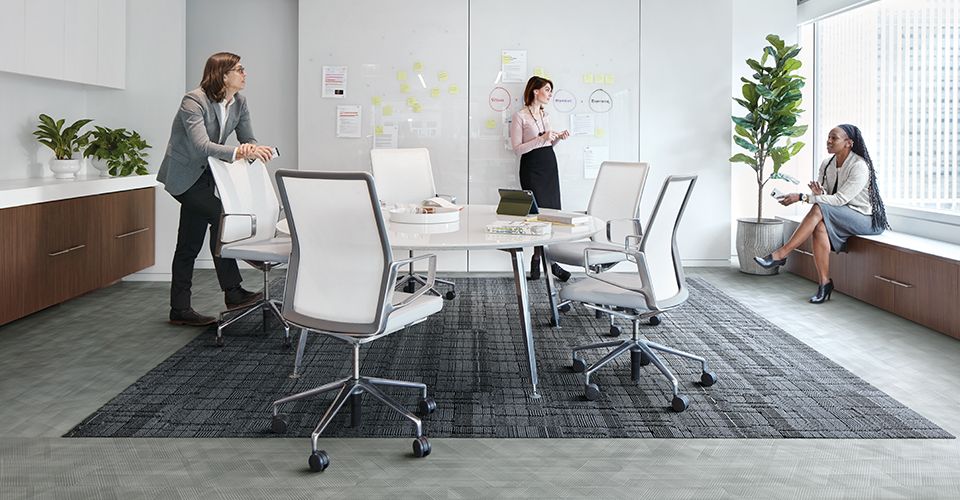Editor’s Note: This piece originally appeared on Interior Design Magazine’s Innovation Channel as part of a content partnership. It has been edited for clarity.
We’re all born with varying degrees of creativity. Enlightened by the digital revolution and the subsequent development of mobile technologies, employers prize creativity because it directly correlates to increased ideation and innovation.
Companies that want to be competitive and innovative in today’s market are turning to workplace design as a solution to boost creativity. Designers, manufacturers, and end-users are embracing a new design aesthetic that acknowledges the dichotomous reality of the contemporary workplace: the space needs to lend itself to plugged-in collaboration and be a respite for solitary work; there needs to be elements that elevate high-tech innovations but not at the expense of tangible, high-touch comforts.

Visual Code series in Circuit Board, Stitch Count, and Haptic.
Herman Miller pioneered this concept with Living Office, the manufacturer’s people-first workspace design service. In 2018, Steelcase upped the ante when they announced a partnership with Microsoft called “Creative Spaces.” This design-focused partnership developed a collection of singular and group spaces intended to stimulate creative, tech-focused work with intuitive technological elements and hospitality-inspired ancillary furnishings.
Rapidly, the design community has responded by envisioning projects and products that honor the creative urge in all of us and seek to hone that drive into an even sharper expression of what the contemporary digital workforce is able to accomplish.
Contract flooring industry leader Interface has turned their attention to designing products that strike a balance between sensorial touches and high-tech gadgetry looking to boost creativity through contemplative design.
“The way our world is right now calls out for reconciliation between technology and our need to be human with sensory experiences,” says Mindy O’Gara, director of product styling at Interface. “Whenever we put out a new product, it’s important to consider, ‘How does this product engage with not just our senses, but our emotions as well?’”

Drawn Lines in Diamond
The brand’s Visual Code collection answers that question. Named Visual Code and Drawn Lines, these additions aim to stimulate out-of-the-box thinking by offering a refined meditation on the interplay of handicraft and technology. Designed by founder of David Oakey Designs and longtime Interface collaborator David Oakey, Visual Code borrows from pre- and post-digital revolution sources, including traditional stitchery, Bedouin rugs, microchips, and glitch art.
At the same time, a new process has allowed Drawn Lines LVT to feature a filament-fine linear matrix. Designed by Kari Pei, Lead Product Designer for Interface, its pattern deftly alludes to geometric motifs found in both manmade structures and mineral compositions.

Drawn Lines in Bronze and Aquamarine
“Technology enables great connections and people can accomplish remarkable things when aided by it, but it can also make people feel disassociated and isolated,” explains Gretchen Wagner, a designer at Interface. “We think that natural and human elements can trigger softer, less contrived emotions. And that’s ultimately what stimulates a creative workspace.”